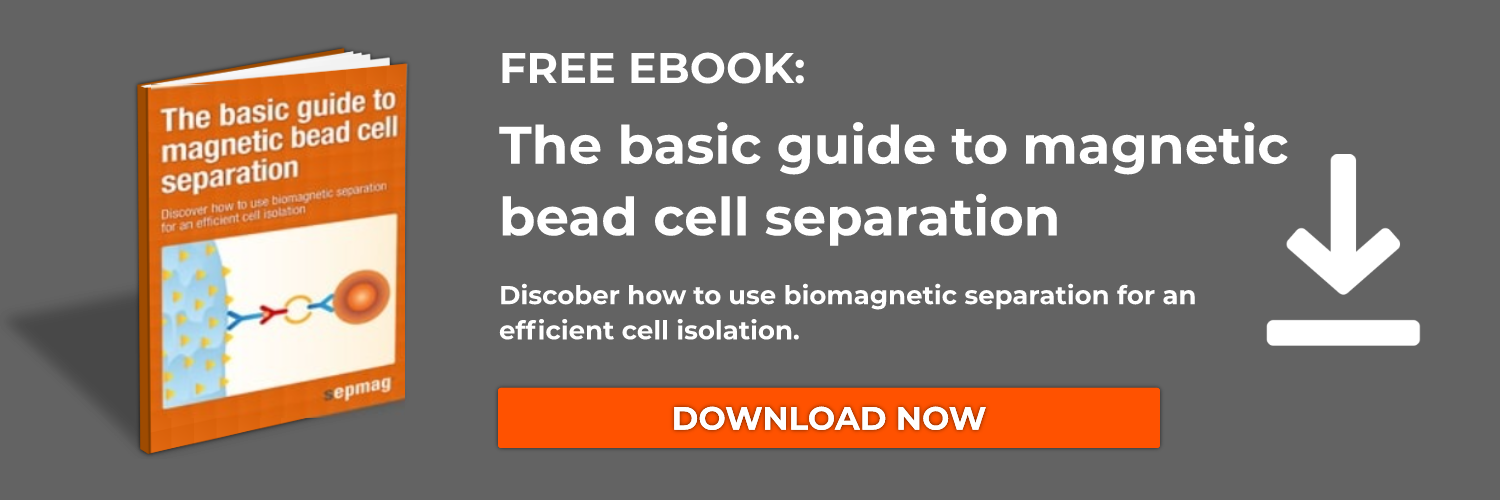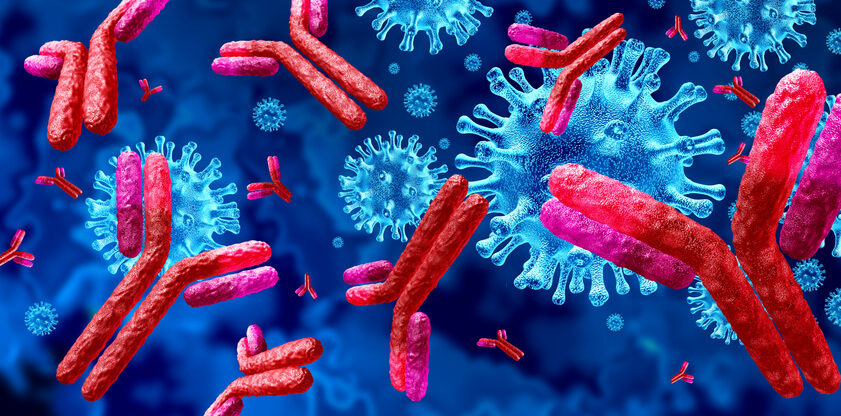Easy background on antibodies
Antibodies are proteins that act as part of our adaptive immune response. In response to a pathogen, our body immediately calls on immune cells that are part of our innate immune response. The next response is called the adaptive immune response, and during this process an immune cell called a B-cell generates antibodies. The primary job of antibodies is to bind to pathogens to neutralize their ability to infect cells and to act as a tag that signals the start of more immune mechanisms.
What antibodies look like and how they work
Antibodies have the structure of the english letter Y. The top of the antibody is the Fab region, sometimes called the “two arms” of the antibody, is where the antibody binds pathogens. This region is called the variable region, because it comes in many varieties to be able to bind the plethora of diverse pathogens that an organism can encounter. The specificity and affinity of the antibody-antigen interaction is determined by the sequence and shape of the variable region of that antibody. The lower region of the antibody is called the FC region. Once the Fab region has found an antigen that it binds, the FC region binds other immune cells and molecules to trigger the immune response to respond to the new invasion (pathogen).
What is the difference between monoclonal vs polyclonal antibodies?
The difference between monoclonal and polyclonal antibodies is in their prefix, mono meaning one, and poly meaning many. Monoclonal antibodies are all made from one type of B cell, and their variable (Fab) region recognizes the same spot on an antigen, also known as an epitope. Polyclonal antibodies can all be produced against the same antigen, but made by many different B cells. Together, the polyclonal antibodies will recognize many places, or epitopes on an antigen. Both polyclonal and monoclonal antibodies are widely used in research, industry, and as therapeutics. Let’s discuss monoclonal vs polyclonal antibodies in more detail!
Polyclonal antibodies, very useful for laboratory work
Polyclonal antibodies are made by harvesting all the antibodies bound to an antigen after injecting an immunogen into a host. The antibodies will bind all over the antigen at various affinities and specificities. The advantage of using polyclonal antibodies in research is that they are easier and cheaper to produce than monoclonal antibodies. Since the polyclonal mixture of antibodies can bind many epitopes on an antigen, they are also useful for detecting a protein that may be at low concentrations and they will act as efficient secondary antibodies in ELISA or other techniques that require secondary antibody labels. The disadvantage of polyclonal antibodies is they will likely vary between batches and will have cross-reactivity.
Monoclonal antibodies, amazing and specific tools
Monoclonal antibodies are harvested from a single B cell that is cultured to produce more of it’s unique antibody. Monoclonal antibodies take longer and are more expensive to produce than polyclonal antibodies, but they are powerful tools in laboratories and clinics. A ubiquitous example is the pregnancy test. The isolation of the anti-HCG (HCG is a hormone secreted during pregnancy) led to the creation of the lateral flow pregnancy assay/test. Monoclonal antibodies can continuously be made and are usually consistent batch to batch. They are now used as therapeutics for cancer. The monoclonal antibodies are used to target cancer cells and alert the immune system of the presence of cancerous cells.

Related news




